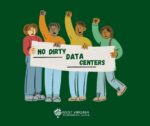by Vickie Wolfe
Sustainable development is defined as “Paths of economic and social progress that meet the needs of the current generation without compromising the ability of future generations to fulfill their own needs.” It might help to compare it with most people’s goal for retirement savings: ideally, they would like to be able to accumulate enough “principal” that when they do reach retirement age, the interest from that principal is enough to live on. Otherwise, if they have to dip into their principal, they might run out of funds before they die.
If we’re living “sustainably” in terms of the Earth’s resources, we’re living off the earth’s “interest” and not touching her “principal:” that is, we’re using resources only as fast as they are able to be renewed. The fact is, however, that we’ve been dipping into our planet’s “principal” for about three decades now. Obviously, this is NOT sustainable!
Following are some “principles of sustainable development” that put the idea into more concrete terms:
- Using non-renewable resources at a rate that does not exceed the rate at which renewable substitutes are developed. Obviously we’re not doing very well here; there’s enough petroleum left to last only a few decades, enough coal to last only about 300 years.
- Using renewable resources (like forests) only within their capacity for renewal.
- Maximization of efficiency.
- Disposal of wastes (i.e., various forms of pollution) only within the capacity of the biosphere to assimilate them. We’re not doing very well here either; the most obvious example is the carbon dioxide (CO2) that is produced in the burning of coal, petroleum, natural gas, and wood. The atmospheric CO2 concentration now exceeds pre-industrial levels by roughly 32%. The average global temperature has also increased and will continue to do so, even if we were to completely stop burning carbon fuels now—because it takes several years, even decades, for the warming effects of CO2 to occur. These effects are potentially catastrophic, including the extinction of a large portion of the plant and animal species on Earth.
- Maximization of recycling.
- “Internalization” of costs. “External” costs are costs that are paid by someone other than the person(s) or organization(s) that benefit from them. I’ll use a prominent local example here: coal. Many people benefit from coal extraction, e.g. the stockholders and employees of coal companies and electricity producers, and the consumers of that inexpensive electricity—you and me. But there are many “external” costs of obtaining electricity from coal: 1) risks to coal miners’ lives and health; 2) decreased quality of life for those who live near surface mining operations; 3) loss of wildlife habitat that results from surface mining and acid rain; 4) health effects of air pollution from power plants; 5) global warming effects of CO2; and more. If these costs were “internalized”—paid by those who benefit from coal-generated electricity—that electricity would be more expensive, which would increase the ability of “renewable” methods of electricity generation to compete.
Dr. Vickie Wolfe teaches biology at Marshall University and occasionally writes for the
WV Environmental Council, www.wvecouncil.org
Permission for use is granted only when the column is used in its complete
and unabridged, unedited form. Any changes void permission to use.





